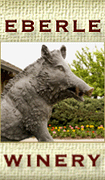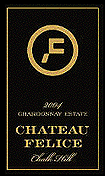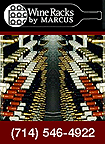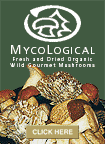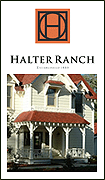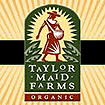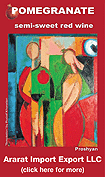Immoveable
Feast: A Paris Christmas
By
John Baxter
Author of A Pound of Paper and We'll Always Have Paris
CONTACT: Audrey Harris, 212-207-7185
audrey.harris@harpercollins.com
As
any true foodie knows, the next best thing to eating a delicious
meal is reading about it. From critically acclaimed writer John
Baxter comes a delicious memoir set in the greenmarkets and
farmhouse tables of France at its most delightful. Baxter's
writings about Parisian life have earned him praise from Newsday,
"a man with a great appeciation of what makes Paris tick"
and the London Sunday Times "towers above most recent [chroniclers]
of life abroad." His latest book is his best yet: IMMOVEABLE
FEAST (Harper Perennial; Trade Paperback Original;
On-Sale: September 23, 2008; $13.95) is the charming, funny,
and improbable story of how a man who was raised on white bread-and
didn't speak a word of French-unexpectedly ended up with the
sacred duty of preparing the annual Christmas dinner for a Parisien
family.
Already,
IMMOVEABLE FEAST has captivated critics: Publishers
Weekly compared Baxter to David Sedaris, noting the "wry
perspective of an outsider permitted into a secret world and
eager to share the rules with other visitors," while Kirkus
Reviews called Baxter "an amiable, jocular companion,"
predicting that "readers will greedily consume the succulent
narrative."
Ernest
Hemingway called Paris "a moveable feast" - a city
ready to embrace you at any time in your life when you feel
able to return its embrace. For Los Angeles-based film critic
John Baxter, that moment came when he fell in love with a French
woman and impulsively moved to Paris to marry her. As a test
of his love, his in-laws charged him with cooking the next Christmas
banquet-for eighteen people in their ancestral family home.
"In evocative prose, [Baxter] deconstructs the dinner's
elements and travels from market to vineyard and from butcher
to cheese monger to assemble a dinner his judgmental relatives
will appreciate . . . Gathering together the freshest oysters,
impeccable apples, perfectly ripe cheese, a prime Bordeaux vintage,
and a show-stopping roast suckling pig laid out on antique linens
finally earns him the family's acceptance." (Booklist)
The result is a delightfully contemporary celebration of local
produce, slow food, and the way that the heart of a culture
can be found in its produce stands. Beautifully illustrated
with illustrations from old French magazines, IMMOVEABLE FEAST
perfectly evokes the pleasures of the holiday season.
Please
let me know if you would like a review copy of this delightful
memoir. I look forward to discussing review and feature opportunities
with you soon.
ABOUT THE AUTHOR:
John Baxter is an acclaimed film critic and biographer. His
subjects have included Woody Allen, Steven Spielberg, Stanley
Kubrick, and Robert De Niro. He is the author of We'll Always
Have Paris (a B & N Discover selection) and A Pound of Paper:
Confessions of a Book Addict. Baxter also is the co-director
of the Paris Writers Workshop and gives walking tours through
Paris Through Expatriate Eyes. He lives with his wife and daughter
in Paris, in the onetime apartment of Sylvia Beach-original
owner of the legendary Shakespeare & Company bookshop.
IMMOVEABLE FEAST: A Paris Christmas
John Baxter
Harper
Perennial; Trade Paperback Original
ISBN: 0061562335
Price: $13.95/ 288 pages
On Sale: September 23, 2008
JOHN'S
GUIDE TO THE BEST PARIS MARKETS
Place de Aligre, 12th arrondissement.
Tuesday to Saturday 8am to 1pm and 4pm-7:30pm, Sundays 8am-1pm.
The
best of the inner Paris markets, Aligre sprawls
along the streets that surround the 18th century covered Marche
Beauvau (opened 1777). The main customers are provident Muslim
housewives with large families, so "Pile it high and sell
it cheap" is the rule. Hence the heaps of aubergines, courgettes,
red, yellow, green and even black peppers, half a dozen types
of onions, and sheaves of fresh-cut coriander and flat-leaf
parsley. Everything goes by fives, tens or dozens, including
meat. Lean lamb and beef is priced in 5-kilo batches, making
this a favorite of restaurateurs and home cooks with large freezers.
As a bonus, Aliugre hosts an interesting junk market at weekends.
Marché
Buci. 6th arrondissement. Tuesday to Sunday, 8am to 1pm.
The
market I know best, since it's just around the corner from our
apartment, and I've shopped here ever since I came to Paris.
Most locals patronize the soul-less Champion supermarket, where
they seem always to be filling the shelves, but I like the big
open-air fruit and vegetable vendor at the corner, the cheese
merchant Fromagier # 31, and the butcher with his large selection
of hams, sausages, pates and, in season, boar, hare and pheasant.
But
Marche Buci is deceptive. For a start, it's not on Rue Buci
at all, but occupies the block of Rue de Seine running from
Boulevard St Germain to Rue Buci. And though the fruit-and-veg
market may look independent, it's owned by Champion. However
it still encourages customers to pick and choose, and their
produce is some of the best in the arrondissement, though hardly
the cheapest.
More
important for the visitor, vendors are used to clients with
limited French. (For a while, the produce store even displayed
a large sign in English saying "Help Yourself" until
it was explained this wasn't the same as "Make Your Own
Selection") . Three open-air restaurants serve light lunches,
and Fromagier # 31 offers a plate with your choice of five cheeses
and a glass of wine which gives one a chance to taste those
knobbly, pungent and mouldy products of obscure dairies which
one wouldn't otherwise risk buying.
Marché
Raspail. Boulevard Raspail. 6th arrondissement, Tuesdays, Fridays
and Sundays, 8am to 1pm.
Ask
anyone to visualize a Paris market, and they will describe something
like Marche Raspail, which occupies the centre island of busy
Boulevard Raspail, one of the main streets running up from the
Seine to the cafes and artistic traditions of Montparnasse.
To
see and be seen, Marche Raspail on Saturday morning is definitely
the place to be.
This
is "Bio" day, supposedly devoted to biologic fruit
and vegetables, but aside from a few vendors with authentically
crooked and dirt-encrusted carrots and potatoes, the fruits,
vegetables, cheeses and charcuterie are classically and decidedly
French in their political incorrectness. A great place to stroll
and take pictures, but you might like to keep walking up the
hill to Rodin's commanding statue of Balzac at the intersection
with Boulevard Montparnasse, and eat at Brasserie Fernande or
the huge, noisy but never boring La Coupole.
Marché
Mouffetard. Rue Mouffetard. 5th arrondissement. Every day, but
best on Sunday mornings 8am to 1pm.
One
needs to be wary to the word "authentic" when talking
about Paris, but for the visitor interested in experiencing
in concentrated form both a sense of what it was like to live
in the Paris of the 1930s and what remains of that spirit today,
the market on Rue Mouffetard is a good place to begin.
For
a start, this was the stamping ground of Ernest Hemingway (who
lived at 74 rue du Cardinal-Lemoine, next to Place de la Contrescape,
where the market begins), as well as George Orwell, who wrote
part of his lugubrious Down and Out in Paris and London in Rue
Pot-de-Fer - not to mention Verlaine, Balzac and Rabelais. It
also figures in more recent books ,eg, the opening of John Le
Carre's Smiley's People.
The
market itself is a plunge into old Paris, with vendors' stalls,
queues of customers and cafe tables all jostling for space.
The shouts of the fruit and vegetable vendors compete with the
street singers and musicians, though all are inundated by the
endless roar of conversation, since, for the French, it's as
unimaginable to shop without discussion as it is to make love.
John's Tips for Preparing Unusual Greenmarket Finds
Not long ago, the lady next in line at the fruit and vegetable
vendor in our local market noted me buying some fresh courgette
flowers and asked "What do you do with those, actually?"
I
explained that I stuffed them with a farce of crab or minced
pork, dipped them in a light batter, and fried them crisp. But
it reminded me that one of the drawbacks of a seasonal cuisine,
where one cooks whatever's fresh in the market that day, is
a tendency to skip the unfamiliar and select something for which
you already have a recipe, and you know your family or guests
will like.
Here are some of my favourite oddities, and the way I like to
cook (or at least eat) them.
Oursins.
Sea urchins. Surrealist painter Salvador Dali claimed he prepared
these according to an old Catalan recipe, with chocolate. It
supposedly gave him wonderful dreams. I prefer to slice off
the top, scrape out the little buds of violet roe that cling
to the interior, and simply spread them on bread. The flavor
also goes well with eggs, and the chef at La Petite Cour on
Rue Mabillon serves them with creamy scrambled egg, and the
roe arranged on top.
Escargots.
A commonplace of French menus, snails are almost invariably
served in their shells, oozing melted butter flavoured with
garlic and parsley. Rather than risk grease strains down my
shirt, I prefer the recipe used at the Bon St Pourcain on Rue
Servandoni. The chef serves them out of their shells, in a special
dish with a dozen wells, each just big enough for one snail.
His sauce uses butter and roughly-chopped garlic, but with a
hint of anise-flavoured pastis.
Riz-de-Veau.
Sweetbreads. American food markets tiptoe round what the British
call "offal", using euphemisms like "variety
meats". Though I shy away from testicles, I enjoy most
organs, with a preference for kidneys, calves' liver and the
thymus gland of the milk-fed calf, aka riz-de-veau or sweetbreads.
Their texture is less chewy than kidney but meatier than liver,
and the flavor lends itself to delicate, sweeter accompaniments
than its more robust relatives. I toss them in seasoned flour
and sauté them in unsalted butter with a few shelled
walnuts, and make a sauce of the pan juices deglazed with white
wine or Charentaise pineau, a sweet mixture of fermented grape
juice and cognac.
Trompettes
de Mort. Black chanterelles, or wood mushrooms. Literally "Trumpets
of Death", these small fluted horn-shaped relatives of
the more familiar girolle turn up in the early autumn. They
often remain unbought, so growers combine them with undersized
girolles, cepes and other wood mushrooms, dry or freeze them,
and market the mix as Melange Forestier. I like them lightly
sautéed and mixed with pasta as an accompaniment to a
ragout of some rich gamey meat, like sanglier - wild boar.
Oreille
de porc. Pig's Ear. The Chicago stockyards used to boast "We
use every part of the pig except the squeal". French charcutiers
- pork butchers - follow this rule, with particular attention
to the head. After being steamed tender, the cheek meat is chopped
fine, and embedded in aspic to make tete de porc, while the
snout or museau is sliced thinly and served chilled in vinaigrette
as an appetizer. The ears are boiled until the meat is limp,
gelatinous and almost transparent. Them they're split, stuffed
with a spicy pork mixture, quickly deep fried in an egg-white
batter, and served with Sauce Ravigote, a light meaty veloute
flavored with vinegar, chopped onions, gherkins and fresh herbs.




